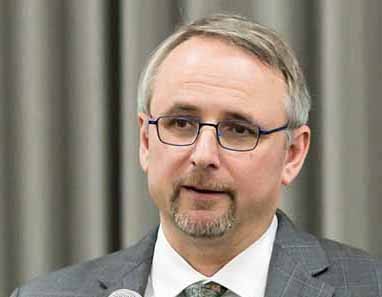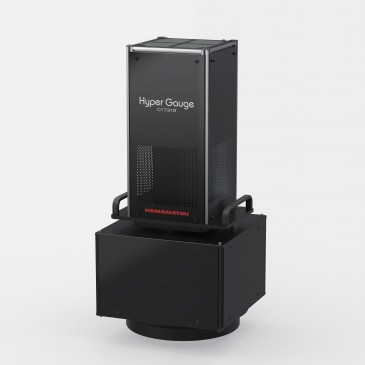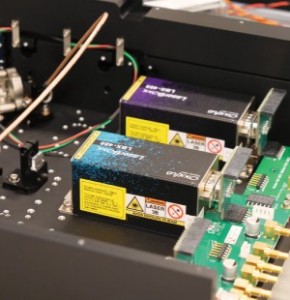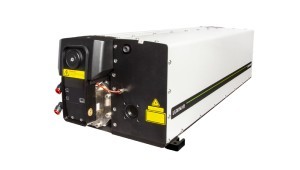
LightCounting is a market research company focused on the global communication industry, including optical and semiconductor components, modules, and sub-systems. The company began seventeen years ago with an analyst team focused on research for high-speed optical interconnects for the communications market. From that time its research team has grown to cover the whole supply chain, supporting optical networks and datacenters. In early 2020, LightCounting added coverage of the global wireless infrastructure market as well. In this article, Jose Pozo, EPIC’s CTO, talks to Vladimir Kozlov, founder and CEO.
Early career
After graduating with a MSc. in Physics from Lomonosov Moscow State University in 1992, Vladimir took advantage of a change in government policy that allowed Russian students to study abroad. He opted for a Ph.D. in Physics at Brown University in the U.S., where he worked on ZnSe based blue/green semiconductor lasers.
As he recalls, arriving in the U.S. was like a trip to the moon, because while growing up in Russia the only things he’d seen of life in the U.S. were propaganda photos of homeless people sleeping on streets: “What was the most striking thing for me was to discover that people are very much the same and that the separation promoted in the cold war was completely artificial”.
After his PhD, he went to Princeton University to do his postdoc on organic semiconductor lasers and then, in 1999, he was taken on by Lucent Microelectronics to design tuneable lasers. A year later, following his family’s move to the West Coast, he became an analyst for RHK, a high-profile consultancy, where he stayed for the next three years writing reports on lasers and various other optical technologies that were getting a lot of funding at the time. The company grew very fast during the telecom bubble, but in 2003, following the telecoms crash he was laid off as a part of an organizational restructuring.

Fortunately, his former scientific adviser from Moscow, who had just started Fianium, a fibre laser company in the UK, accepted Vladimir’s offer to help expand the business into the US. So, in 2004, Vladimir became Vice President of Fianium, where he stayed for the next six years. The company was very successful, and it was acquired by NKT in 2016.
LightCounting market research
Shortly before joining Fianium, Vladimir was approached by a former client at RHK with the offer of some freelance work to collect market data on the optical and semiconductor market, which would be shared among five other large companies.
The project was a success and led to more market surveys, and then in 2004, Vladimir set up LightCounting to handle the increasing demand for market data. Over the next five years, the company grew slowly, building up a reputation for supplying the industry with reliable, critical information. In 2010, Vladimir left Fianium to work on LightCounting full-time.
Company development
Over the last 16 years, LightCounting has grown, currently employing ten analysts in China, Japan, Europe and the US. Their market reports cover the whole gamut of optical communication technologies from automotive LiDAR and VCSELs for 3D sensing in Smartphones, to next-generation access optics, wireless infrastructure and high-speed Ethernet optics.
Their coverage is global, with country specific data for China and Japan. LightCounting is now recognised globally as one of, and perhaps as the best source of market data on wireless and optical communication.
Vladimir credits their success as due to the following factors:
First, is being honest to both the clients and to the team about things that are known and those that can only be modelled. They never pretend to know the future, always emphasising its unpredictability.
Second, is patience in developing relationships. As Vladimir explains, in some cases, particularly with Chinese companies, it has taken him twelve years before a company has been confident enough to divulge the required information. In these situations, from day one, the only productive approach is not to exert any pressure but rather to wait until the company can see the benefits of sharing its data.
Third, is teamwork. One of LightCounting’s strengths, which sets it apart from its competitors, is that they don't separate analysts into different research areas. Although the majority of reports have lead authors, everybody contributes to the final result. It is a team effort, which is particularly important for providing accurate global coverage.
Future trends
Asked for his views on future trends and the hype surrounding some photonics technologies, Vladimir makes two points. First, you have to be smart enough to realise that hype is a required part of the process because over excitement is what gets the investors moving and gets the people in the sector sucked into the technology. Secondly, with or without hype, you have to keep your feet on the ground and be aware that any transition will take longer and require a lot more effort from companies than expected.
Co-packaged optics (CPO): CPO brings optics and switch silicon together in the same package to create a synergy between the technologies that significantly saves power and improves performance. While LightCounting is supportive of CPO and big companies are now making large investments in the technology, it will probably be four to five years before it starts to make a difference i.e., when the end-users will start deploying the technology at scale.
What’s important in this field is the work that companies like Broadcom, Intel, and Cisco, are now putting in behind the technologies that will be used for CPO. Eventually, a more open ecosystem will develop around CPO, which is ultimately what the big end-users like Microsoft and Facebook would like to see, that is, several suppliers providing standard solutions because that's the best way for them to achieve the lowest price points.
Beyond 400 Gbps: Although innovative photonics technologies are being developed to maximize data throughput and extend data delivery speeds beyond 400 Gbps, the trend will be a move towards having more lanes and more channels rather than just continually increasing the speed of a single channel. For example, Ethernet applications of 800G are parallel type solutions of 8 x 100 G per lanes, and it will probably stay like this for the next five years. Eventually, there will be a move to 8 x 200 G or 16 x 200G, but going beyond 200G per lane will be really challenging and probably not power efficient. Coherent DWDM optics can reach 800G per wavelength, but the high-power consumption of the current generation of these solutions is a problem.
3D sensing: 3D sensing is a good example of a technology success story. When it first developed 15 years ago, it was very expensive and considered impracticable for most applications. But thanks mainly to Apple, the technology has been miniaturised and the cost per VCSEL on large arrays has been brought down to less than one cent per laser. With exciting developments in the sensor market, LightCounting has published reports on 3D sensing for the last three years.
Lidar for automotive: LiDAR for automotive will not be easy. The prices of LiDARs have collapsed last year and not every technology will be able to scale down to that reality. Some companies will succeed and find applications, but LightCounting doesn’t expect to see many self-driving cars on the road in the next five years. It will start with niche applications, like fully automated trucks and taxis in some communities around the world. Eventually, it will happen on a large scale, but all parties should be very patient and pragmatic with their investments.
Quantum: Although LightCounting sees quantum as a fascinating technology, they don’t see any real-life applications emerging any time soon. Eventually, there will be applications but at the moment, they are not doing any kind of quantum market research because it’s just too early. This is not to belittle quantum research because as Vladimir points out, governments and society need big ideas, which, as in the early days of the space race, can justify pouring money into research, but it needs to be seen as a vision stretching over decades.
What would you do differently if you started again?
“To be honest, not much. I have to admit that my career has not been all of my own making. As a young engineer, you are immersed in a world that shapes you probably more than you shape it. In fact, I don't feel I have full control over my career even now. We start projects, for example, looking at medical applications for sensors, but I have to admit we may not find any interesting market and the efforts will fail. But we keep on trying because you never know what you're going to find.”
“Because it’s impossible to accurately predict how things are going to change in two or three years from now, you have to take some risks and be ready for the unexpected. I wish I had been a bit more aware of that when I was a grad student, but I don't think I would have done anything differently.”
Written by Jose Pozo, Chief Technology Officer at EPIC (European Photonics Industry Consortium).




































 Back to Features
Back to Features



























